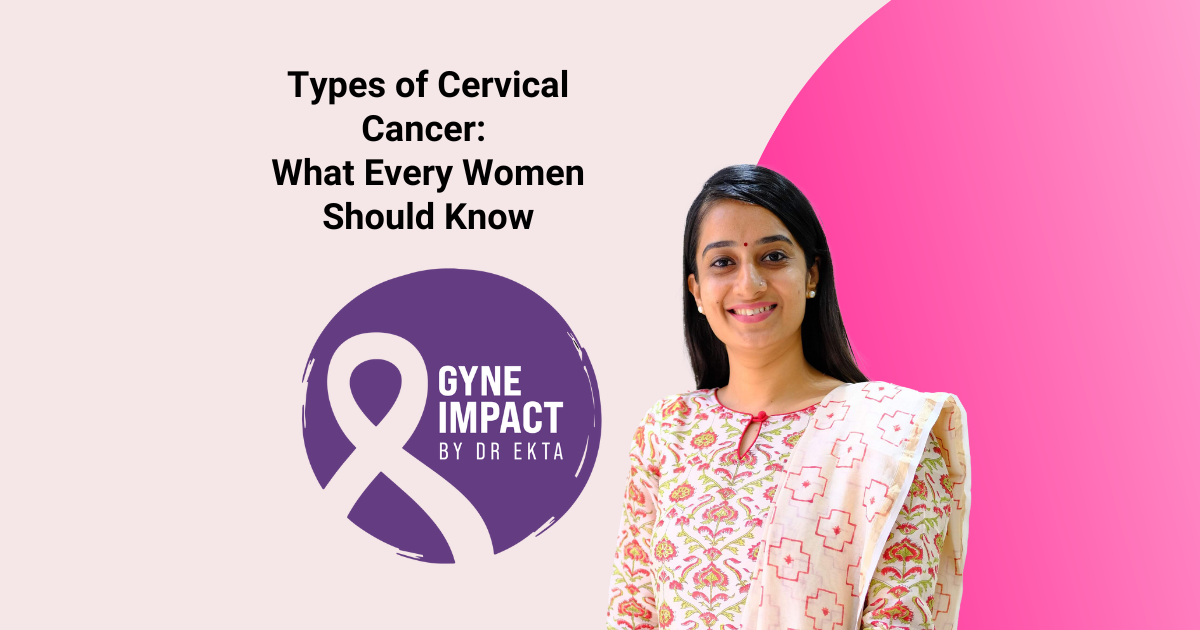As an oncologist, I often see women who are unaware of the different types of cervical cancer and how they can impact their health. Awareness is crucial because cervical cancer is one of the most preventable and treatable forms of cancer when detected early. In this blog, I want to share key insights into cervical cancer, its types, and what every woman should know to protect herself.
Understanding Cervical Cancer
The cervix is the lower part of the uterus that connects to the vagina. Cervical cancer occurs when abnormal cells in the cervix grow uncontrollably. The most common cause of cervical cancer is persistent infection with the human papillomavirus (HPV), but other factors can also contribute.
While most people associate cervical cancer with a single disease, there are actually different types. Understanding these variations can help in early detection and better treatment choices.
The Two Main Types of Cervical Cancer
There are two primary types of cervical cancer:
1. Squamous Cell Carcinoma (SCC)
- This is the most common type, accounting for about 70-80% of all cervical cancers.
- It begins in the thin, flat cells that line the outer part of the cervix.
- SCC is often linked to persistent high-risk HPV infections.
- Symptoms may include abnormal vaginal bleeding, pelvic pain, and discomfort during intercourse.
2. Adenocarcinoma
- This type represents 10-20% of cervical cancers.
- It originates in the glandular cells inside the cervical canal that produce mucus.
- Adenocarcinoma is slightly harder to detect because it develops higher up in the cervix.
- HPV infection also plays a major role in its development.
Less Common Types of Cervical Cancer
Although squamous cell carcinoma and adenocarcinoma make up the majority of cases, there are rare types of cervical cancer that women should be aware of:
3. Adenosquamous Carcinoma
- A combination of squamous cell carcinoma and adenocarcinoma.
- It behaves aggressively and requires a targeted treatment approach.
4. Small Cell Neuroendocrine Carcinoma
- A rare but highly aggressive form of cervical cancer.
- It grows rapidly and requires intensive treatment, including chemotherapy and radiation.
5. Clear Cell Carcinoma
- This rare type is sometimes linked to prenatal exposure to diethylstilbestrol (DES), a synthetic estrogen prescribed to pregnant women in the mid-20th century.
- It can develop in younger women and may require specialized treatment.
Symptoms of Cervical Cancer
Regardless of the type, the symptoms of cervical cancer often overlap. Some warning signs include:
- Unusual vaginal bleeding (especially after intercourse or between periods).
- Persistent pelvic pain.
- Increased vaginal discharge with a strong odor.
- Pain during sexual intercourse.
- Frequent urinary problems.
If you experience any of these symptoms, I strongly encourage you to consult a healthcare professional for an evaluation.
Risk Factors for Cervical Cancer
Several factors can increase the risk of developing cervical cancer, including:
- Persistent HPV infection (high-risk strains like HPV 16 and 18).
- Smoking, which weakens the immune system and damages cervical cells.
- Weakened immune system due to conditions like HIV.
- Long-term use of birth control pills (over five years).
- Multiple full-term pregnancies.
- A family history of cervical cancer.
Prevention and Early Detection
The best way to prevent cervical cancer is through regular screenings and HPV vaccination. Here’s what I recommend:
1. HPV Vaccination:
- The HPV vaccine protects against the most common cancer-causing strains of the virus.
- It is most effective when given between ages 9-14, but adults up to age 45 can also benefit.
2. Pap Smear and HPV Testing:
- A Pap smear detects abnormal cells in the cervix before they turn into cancer.
- HPV testing checks for the presence of high-risk HPV strains.
- Women should begin screening at age 21 and continue at regular intervals as recommended by their doctor.
3. Healthy Lifestyle Choices:
- Avoid smoking and limit alcohol consumption.
- Practice safe sex to reduce HPV risk.
- Eat a diet rich in fruits and vegetables to boost immunity.
- Stay physically active and maintain a healthy weight.
Treatment Options for Cervical Cancer
If cervical cancer is detected early, it can be successfully treated. The treatment depends on the stage and type of cervical cancer, but common options include:
- Surgery (such as hysterectomy) for early-stage cases.
- Radiation therapy to target cancer cells.
- Chemotherapy, especially for advanced stages or aggressive types.
- Targeted therapy and immunotherapy, which are emerging treatment options.
Final Thoughts
As a doctor, I have seen the impact of cervical cancer on women and their families. The good news is that cervical cancer is one of the most preventable cancers when detected early. Regular screenings, HPV vaccination, and healthy lifestyle choices can make a significant difference.
By understanding the different types of cervical cancer and staying proactive about your health, you can reduce your risk and take control of your well-being. If you have any concerns, don’t hesitate to reach out to your healthcare provider. Remember, early detection saves lives!
Stay informed, stay healthy, and take charge of your cervical health!

